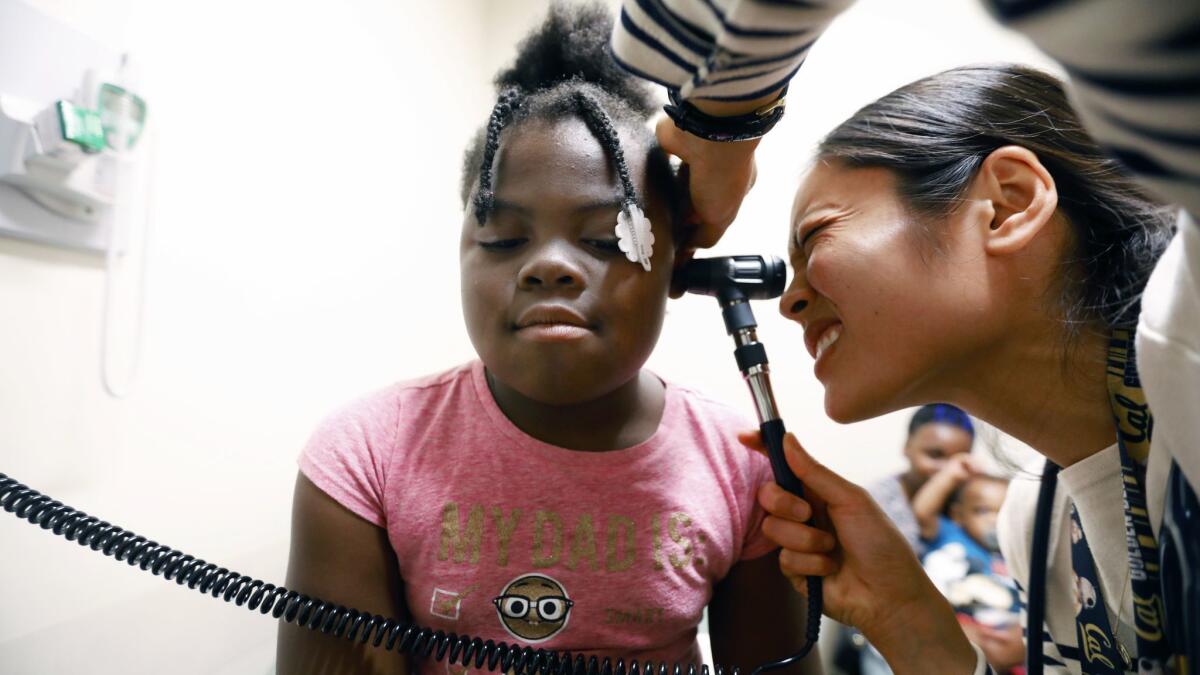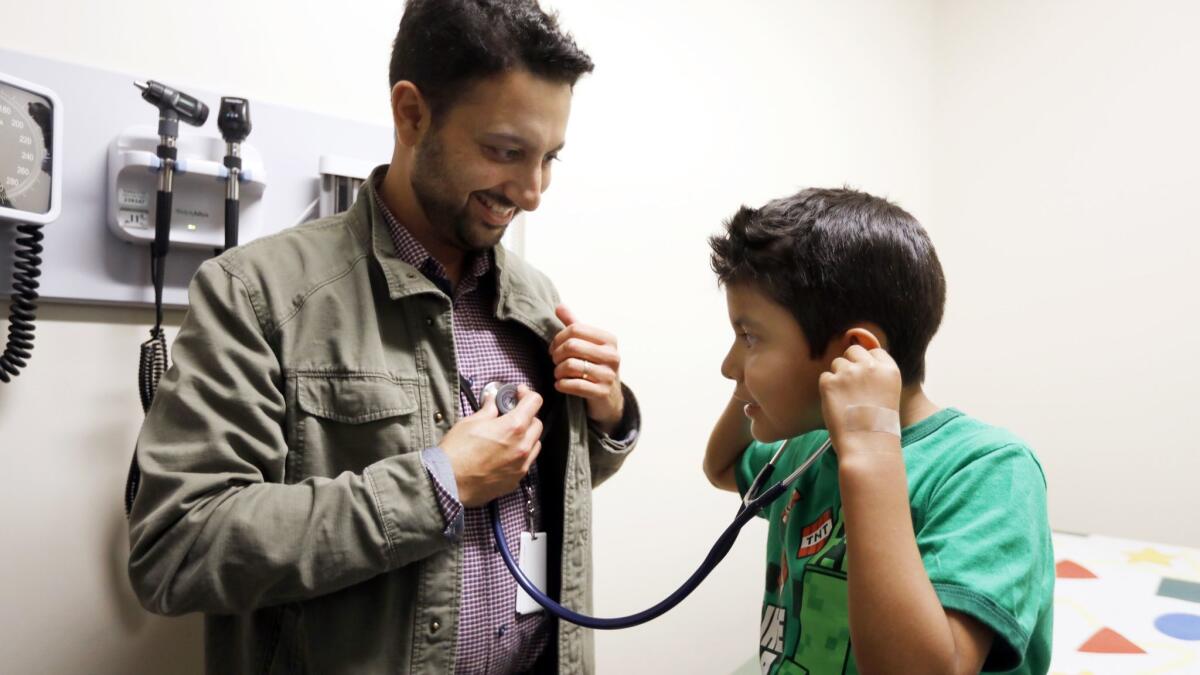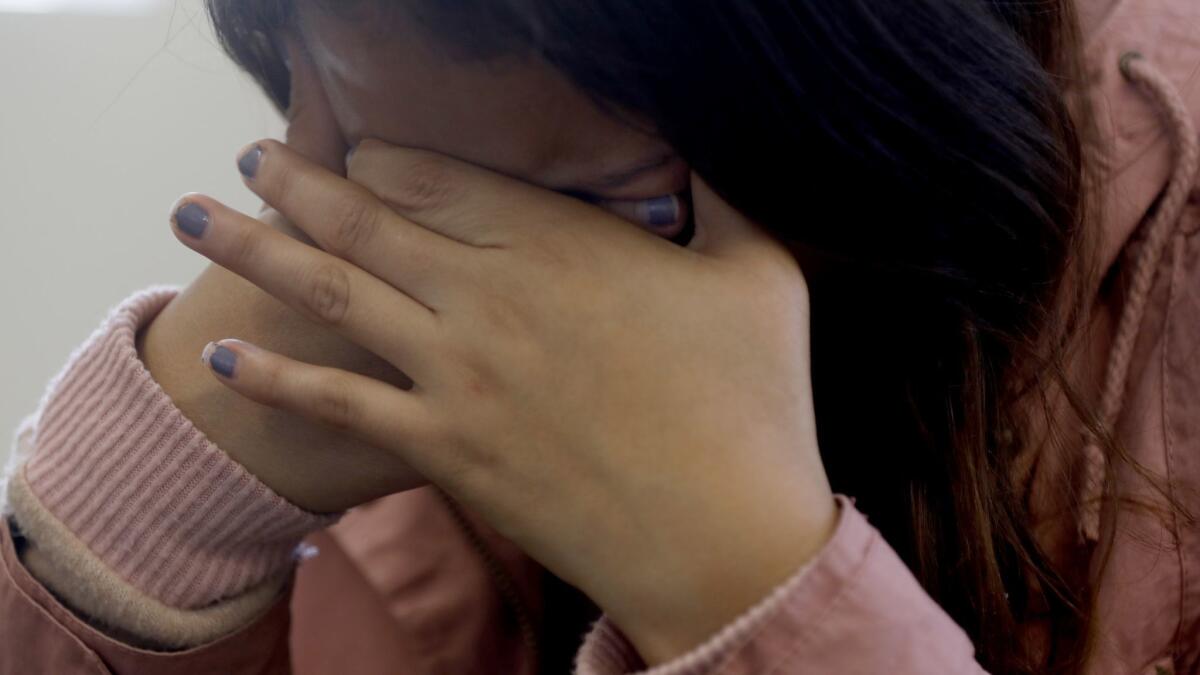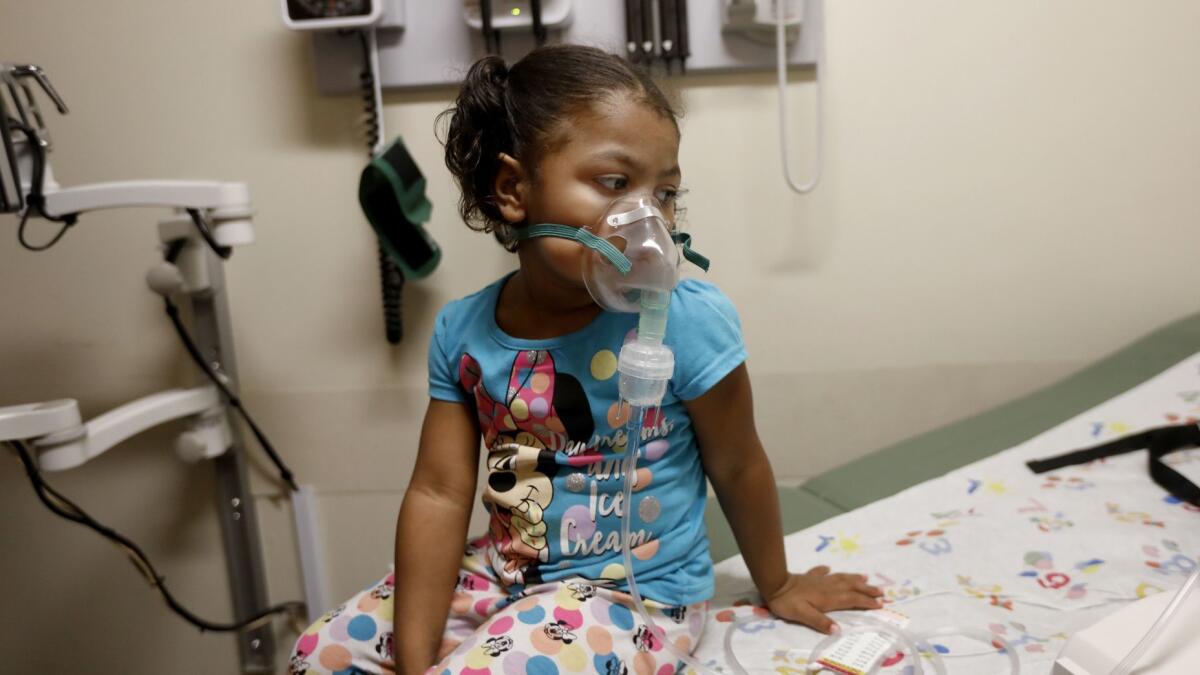Column: They’re sick, traumatized, malnourished and transient — what child poverty looks like in Los Angeles

- Share via
Many of the children who visit the St. John’s Well Child and Family Center at 58th and Hoover in South Los Angeles are anything but well.
The dentists treat children who suffer excruciating pain from swollen gums and rotting teeth.
“I just had a 2 1/2-year-old I had to refer for full mouth reconstruction,” said Dr. Shidrokh Mafi, who gets frustrated by parents who don’t follow advice about making sure their children brush, floss and avoid baby bottle syndrome — the decay caused by sugars from juice and soft drinks.
The doctors routinely see chronic preventable diseases common in third-world countries, and developmental delays are standard. Dr. David Bolour said he sees children daily who suffer from trauma they’ve experienced in their high-crime neighborhoods or in the places they fled, particularly Central American countries torn by violence.
“I had a 6-year-old who witnessed his grandfather’s hands being chopped off right in front of his eyes,” said Bolour, who seemed a bit traumatized himself after three years of working with children haunted and damaged by things that are a routine part of their lives.
“I had a 14-year-old yesterday whose mother was deported to Mexico, and he can’t even answer my questions about it. … He has anger toward his mother, actually. About 50% of the 20 patients I see in a day are dealing with something psychological or emotional, and it’s affecting their health.”
Bolour said common aches and pains in children can have different causes than he was fully aware of before he began working in South L.A.
“I’m seeing severe headaches, chest pain, abdominal pain, leg pains, dizziness — things that in my training were not addressed in a psychological way or thought to have a psychological root,” Bolour said . “But I’m seeing them so commonly here, and there’s a clear link.”

California, home to the world’s fifth-largest economy, has the dubious paradoxical distinction of unmatched wealth and nation-leading poverty rates. In one of the most recent studies, the California Budget & Policy Center reported that more than 20% of the state’s children live in families who can’t afford basic necessities, thanks in part to the state’s housing crisis and high cost of living.
Such reports are laden with sobering statistical analysis and valiant calls for legislative action to supplement existing support. But they usually lack the most important part of the story.
Children.
We all know there’s a divide, particularly in a state like California, where unimaginable abundance lives not far from economic despair.
But if you live in poverty as a California child, what do you eat in a day, what do you wear, what are your housing conditions, the crime rates in your neighborhood, the quality of your schools?
What are your hopes, and what are your fears?
You can find some of those answers with a visit to the doctor’s office. St. John’s, a nonprofit, has 15 medical centers and treats about 100,000 low-income residents in South Los Angeles and Compton. A big part of the mission is to provide health and nutrition education and advocacy for clients, but the deficits in people’s lives can be staggering and the challenges can seem insurmountable.
“What we’re seeing is huge amounts of people being displaced, more and more food insecurity, housing insecurity, people moving, families doubling up, and all kinds of slum housing conditions that cause people to be sick,” said St. John’s CEO Jim Mangia.
“We pull cockroaches out of kids’ ears every week,” he said.
::
Jessica, 26, takes a prenatal class at the main St. John’s clinic. A few minutes after I began asking about her living conditions, she dropped her head and began weeping. Her sobs were muffled, maybe to keep her 3-year-old son from seeing his mother in such distress. He sat on the floor, playing with a game on his mother’s phone.

They had their own home in Guatemala, said Jessica, who asked that her last name not be used. She was an assistant to the head of a bank, and her husband was a barber. They lived a good life, her son was cared for by his grandmother when she was at work and she’s expecting a second child in November.
But extortion and violence are commonplace in her country, she said. Her husband was given an ultimatum: Pay a protection tax to a local syndicate, or his family would be killed. He went to the police, who were no help. So he shut down his business, the family cleaned out its savings, got tourist visas and flew to Los Angeles two months ago.
Distant relatives took them in, but the arrangement is temporary. Jessica, her husband and son live in one small room of a house shared with four other people. Her husband finds construction jobs some days and contributes to the household food budget, and her son gets enough to eat, she said.
But Jessica often goes hungry, even though her baby is due this fall and nutrition is key at this point. She said she doesn’t want to impose any more than she already does on a family who is allowing them to stay rent-free for now, but not forever.
“Sometimes I’m embarrassed to get more food,” she said.
Jessica thought she’d be able to file for political asylum because of threats against her family in Guatemala, but an attorney told her that might not be possible, especially in the current political climate, in which parents and children fleeing their countries are being separated. So she wonders what will come of them when their tourist visas run out, her hosts ask her to move and she can’t go back home but might not be allowed to stay in the U.S.
“I don’t know what will happen,” Jessica said, but she feels safer here than she did in Guatemala. “At least I know I’m not going to be left a widow.”
::
Ronda Davis, who brought her four kids to the clinic for checkups, said she has lived in her car and in shelters. She said the family has dressed in parking lots, and she has washed the children with baby wipes when no bath was available. She said they often were cold at night.

Davis said she regrets starting a family when she was so young and repeating the cycle that began when she and her mother were homeless and her father died of an overdose.
“But they’re here,” she said of her kids, “and I’m going to do the best I can.”
The eldest has been acting out in school and is slightly overweight. The youngest child has delayed speech. The 3-year-old, badly asthmatic, sat glumly on an exam table with a mask over her face and steam pouring out of it.
“That sounds much better now,” Dr. Patricia Campbell said after applying a stethoscope and listening to the girl’s breathing.
Campbell said asthma is caused by dust, mold, carpets, smoke, proximity to highways and vehicle exhaust — all the things children are exposed to daily in low-income communities.
“Obesity, chronic care and developmental issues are the three main things we see. And lots of speech development issues,” Campbell said.
Obesity is not necessarily about eating too much, but about eating the wrong foods. Mangia, the CEO, said the clinics see cases of “blood sugar levels through the roof” when a patient runs out of money and may eat nothing but tortillas for days. For too many children, diets are high in processed food. Salt, sugar and fat outlets dominate the fast-food landscape in South Los Angeles, where pork rinds are a little easier to find than kale chips.
“Healthy food can be expensive,” said Campbell, who talked about Westside friends as if they lived in a different universe, flush with organic diets, books and daily exposure to healthy, rather than harmful, experiences. She said she sees a disproportionate amount of teenage diabetes at the clinic and thinks developmental disabilities are tied to a lack of intellectual stimulation, in part because so many parents are busy just trying to survive. Campbell said she’s raising money to buy books for her patients.
Just down the hall, Bolour examined a young boy who had been diagnosed with autism a year earlier but was showing some improvement. Bolour said it can be difficult to distinguish between autism and the developmental disabilities associated with poverty. The boy’s mother said the family lives in a backyard cottage and their only income is from her husband’s job at Panda Express.
“We try our best,” said the mother, “but fruits and vegetables are high right now.”
Bolour, who grew up on the Westside, said it’s impossible to not get attached to the families he sees, and to wonder, at the same time, how much longer he can do a job that’s as emotionally draining as it is rewarding.
“Every time I drive here, I feel like I’m coming to a different country,” the doctor said.
“A friend of mine had a baby and asked me if 6 months old was too early to put the baby in one of those running strollers. I never got that question in my three years in South L.A.”
Get more of Steve Lopez’s work and follow him on Twitter @LATstevelopez
More to Read
Sign up for Essential California
The most important California stories and recommendations in your inbox every morning.
You may occasionally receive promotional content from the Los Angeles Times.














